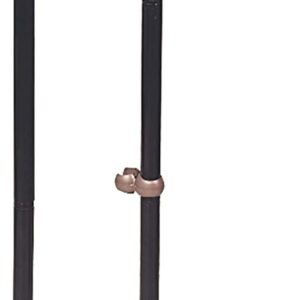The Harness vs. Collar Debate: Understanding the Pros and Cons, and Which Option is Best for Your Dog, According to Veterinarians
By IAN
As a dog owner, one of the most important decisions you’ll make is choosing between a harness and a collar for your furry friend. While both are common choices, they each have their advantages and disadvantages. Ultimately, the decision between a harness and collar depends on your dog’s size, breed, and temperament, as well as your training goals and personal preferences.
What is a Collar?
A collar is a basic accessory that goes around your dog’s neck, with a leash attached to a ring or clip on the collar. Collars come in a variety of materials such as nylon, leather, and metal. They are typically used for training and controlling your dog, as well as for displaying identification tags and licenses.
Pros of Using a Collar:
- Easy to Use: Collars are simple to put on and take off, making them convenient for everyday use.
- Cost-effective: Collars are relatively inexpensive compared to harnesses, making them a budget-friendly option.
- Identification: Collars can hold identification tags and licenses, making it easier for your dog to be identified if they get lost.
- Training: Collars can be used for basic training, such as teaching your dog to walk on a leash and to respond to commands.

Cons of Using a Collar:
- Neck Injuries: Collars can cause neck injuries, such as tracheal collapse or injury to the spinal cord, if they are not used properly or if your dog pulls too hard on the leash.
- Limited Control: Collars can be ineffective in controlling dogs who pull excessively, and they can also slip off if your dog has a smaller head or neck.
- Pressure Points: Some collars, such as choke chains and prong collars, can cause discomfort and pain to your dog and should be avoided.
Check out The 5 Best Flea and Tick Collars for Dogs
What is a Harness ?
A harness is a piece of equipment that goes around your dog’s body, with a leash attached to a ring or clip on the harness. Harnesses come in a variety of styles, including back-clip, front-clip, and dual-clip, and they are typically used for training and controlling your dog, as well as for providing additional support for dogs with medical conditions.
Pros of Using a Harness:
- Comfort: Harnesses distribute pressure evenly across your dog’s body, making them more comfortable for dogs with respiratory problems, neck injuries, or tracheal collapse.
- Control: Harnesses provide more control over your dog’s movements, making them ideal for dogs who pull excessively or who are prone to lunging or jumping.
- Training: Harnesses can be used for advanced training, such as teaching your dog to walk on a loose leash or to perform specific tasks.
- Safety: Harnesses can prevent your dog from slipping out of their collar or getting injured by a sudden jerk on the leash.

Cons of Using a Harness:
- Cost: Harnesses can be more expensive than collars, especially if you opt for a higher-quality option.
- Size: Some harnesses may not fit well on smaller dogs, and they may also be too bulky or cumbersome for some dogs.
- Training: Harnesses may not be as effective for basic training, such as teaching your dog to respond to commands or to walk on a leash.
Which Option is Best for Your Dog?
Ultimately, the decision between a harness and collar depends on your dog’s individual needs and preferences. Here are some factors to consider when choosing between a harness and a collar:
- Breed: Some breeds, such as French Bulldogs and Pugs, are prone to respiratory problems and may benefit from a harness that doesn’t put pressure on their necks. On the other hand, breeds with long necks and narrow heads, such as Greyhounds and Whippets, may be more comfortable with a collar.
- Size: The size of your dog can also affect your decision. Smaller dogs may benefit from a harness that provides more support and control, while larger dogs may require a collar with more strength and durability.
- Temperament: The temperament of your dog can also play a role in your decision. Dogs who are prone to pulling or jumping may benefit from a harness that provides more control, while dogs who are well-behaved on a leash may do well with a collar.
- Training Goals: Your training goals can also affect your decision. If you’re focusing on basic training, such as teaching your dog to walk on a leash and to respond to commands, a collar may be sufficient. However, if you’re working on advanced training, such as teaching your dog to perform specific tasks, a harness may be more effective.
- Personal Preferences: Ultimately, your personal preferences should also be taken into account. Some dog owners prefer the look and feel of a collar, while others prefer the added control and comfort of a harness.
Tips for Proper Use of Harnesses and Collars:
No matter which option you choose, it’s important to use it properly to ensure the safety and comfort of your dog. Here are some tips for proper use of harnesses and collars:
- Fit: Make sure your harness or collar fits your dog properly. A harness should be snug but not tight, and a collar should be able to fit two fingers between the collar and your dog’s neck.
- Materials: Choose a high-quality harness or collar made from durable materials that won’t cause discomfort or injury to your dog.
- Supervision: Always supervise your dog while they’re wearing a harness or collar to prevent choking, injury, or escape.
- Replacement: Replace your harness or collar as needed, especially if it becomes worn or damaged.
When it comes to choosing between harnesses and collars, there are many opinions and recommendations out there. Some people swear by one option or the other, while others may use a combination of both depending on the situation. However, when it comes to the opinion of veterinary professionals, the consensus is that both harnesses and collars can be effective and safe, as long as they are used properly.
One of the main benefits of using a harness is that it can provide more control and support for your dog. This can be especially helpful for dogs who are prone to pulling or jumping, as a harness can distribute the pressure more evenly across the dog’s body and prevent choking or injury to the neck. Harnesses can also be helpful for dogs with certain health conditions or injuries, as they can provide added support and stability.
On the other hand, collars can be a good choice for dogs who are well-behaved on a leash and don’t require as much control or support. Collars can also be more convenient for everyday use, as they are easy to put on and take off and don’t require as much adjustment or fitting as a harness. Additionally, some dog owners prefer the traditional look and feel of a collar.
It’s important to note that there are also different types of harnesses and collars to choose from, each with their own unique features and benefits. For example, front-clip harnesses are designed to discourage pulling and redirect your dog’s attention back to you, while back-clip harnesses provide more freedom of movement and can be a good choice for dogs who are comfortable on a leash. Martingale collars are designed to prevent slipping and provide more control, while flat collars are a basic option that can be suitable for well-behaved dogs.
Conclusion
When it comes to making the decision between a harness and a collar for your dog, it’s important to take into account your dog’s individual needs and preferences, as well as any advice from your veterinarian or a professional dog trainer. While there is no one-size-fits-all answer, understanding the benefits and drawbacks of each option can help you make an informed decision that is best for your furry friend.
Disclaimer: This article may contain affiliate links to products. All product details reflect the price and availability at the time of publication. We may receive a commission for purchases made through these links.



